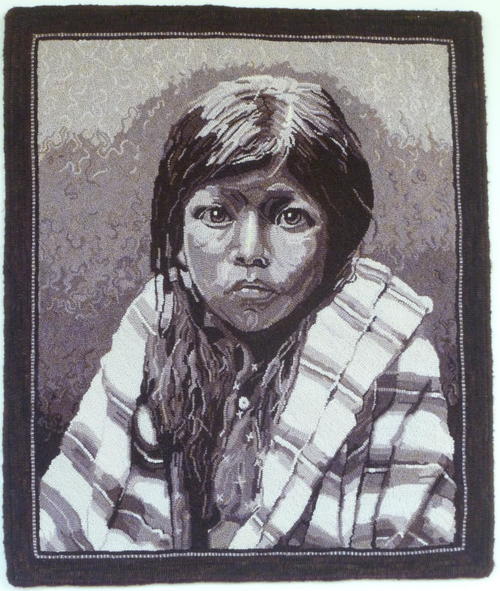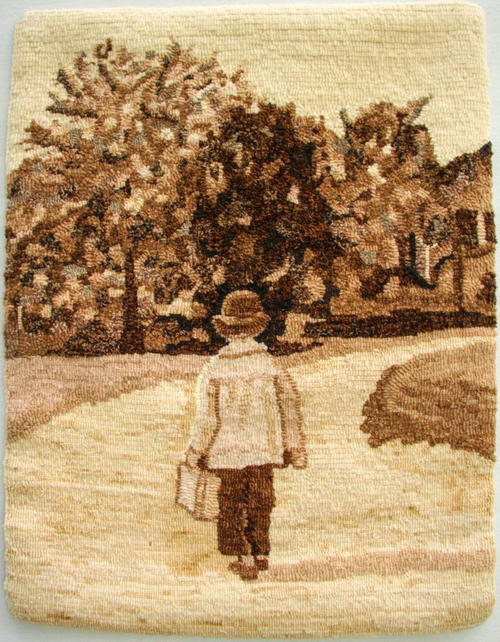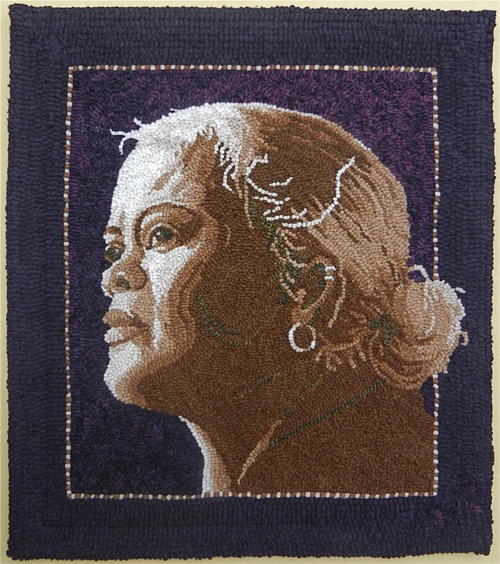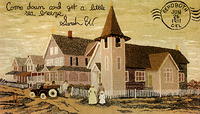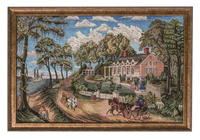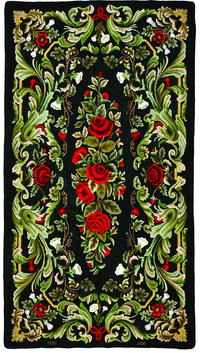Forty Shades of Brown
A lesson in hooking sepia rugs
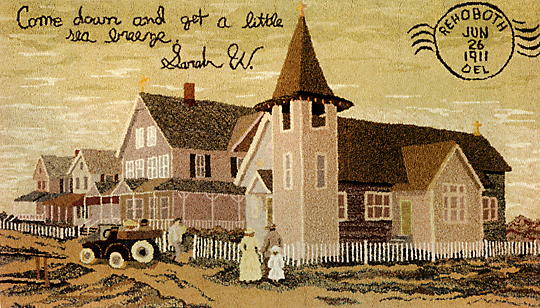
Saint Agnes by the Sea, 21 ½" x 39 ½", #3-cut wool on linen. Adapted from an old photograph of a church in Rehoboth Beach, Delaware. Designed and hooked by John Flournoy, Lewes, Delaware, 2008.
Years ago, as a brand new rug hooker, I came across the image of John Flournoy’s Saint Agnes by the Sea. That award-winning rug was adapted from a sepia postcard of a stately old church in Rehoboth Beach, Delaware. It includes the 1911 postmark and the hand-scrawled invitation, “Come down and get a little sea breeze.” I have never forgotten that quietly striking rug. Perhaps no style of rug hooking conveys a greater sense of nostalgia or historic significance than that which mimics the look of old sepia photography.
The word sepia comes from the Greek and means “cuttlefish,” a mollusk that secretes dark brown ink. In early photography, a gold toning bath would cause a brown tint to occur in photos, which eventually faded into the reddish-brown colors we call sepia.
Expanded coverage: Included here are a few excellent examples of sepia-toned rugs that were not shown in the issue.
Sepia rugs appear on occasion in the pages of RHM and Celebration. Some of the most exquisite examples of the genre include Indian Boy—Ah-Chee-Lo and Paul Laurence Dunbar by Donna Hrkman, Running Away by Diane Kelly, and more recently Lyle Drier’s Woman in Sepia. You will surely think of other fine examples.
-
Indian Boy—Ah-Chee-Lo, 28" x 33", #3-cut hand-dyed wool on cotton linen backing. Adapted from a photograph by Edward Curtis and hooked by Donna Hrkman, Dayton, Ohio, 2011.
-
Running Away, 16" x 21", #6-cut hand-dyed wool on linen. Designed and hooked by Diane Kelly, Dorset, Vermont, 2001.
-
Woman in Sepia, 15½" x 17¾", #3-, 4-, and 5-cut wool on linen. Adapted from a portrait by an unknown artist and hooked by Lyle Drier, Waukesha, Wisconsin, 2012.


